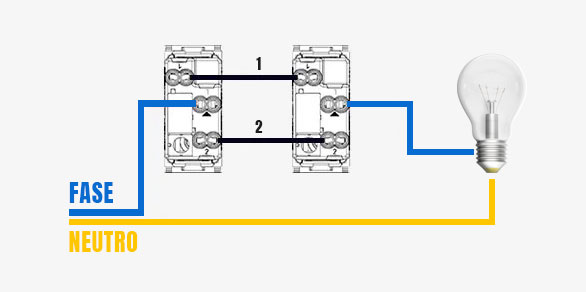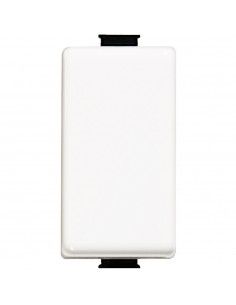- HOW TO DO
- 3 likes
- 48709 views
- 0 comments

Electric Diverter Complete Guide | Electrical Diagram, Utilities and Operation
The electrical diverter is known as a type of switch that, unlike the classic switch that interrupts the flow of current, diverts it to another cable.
What is a current diverter used for?
This device is mainly used in civil electrical systems. Thanks to the diverter, the user has the possibility of managing the switching on and off of a light using multiple control points, i.e. multiple buttons.
Operation of Electric Diverters
The diverters do not act individually, but work in pairs. When talking about the electrical system , it is important to consider that each diverter must necessarily be connected to a second diverter.
Diagram and Location of the Electric Diverter
To better understand the importance of this device and its operation, we will examine how it is structured and how it is connected in a simple wiring diagram.
Structure of an Electric Diverter
The structure of an electrical diverter is quite simple. In fact, electric switches have a structure practically identical to classic buttons. They have 3 terminals on the back , two of which need to be connected with a conductor cable to the second diverter. The third terminal, however, must be connected directly to the current phase.
Diverter Symbol in Electrical Diagrams
In circuits and diagrams of electrical systems , the diverter is commonly represented with a particular symbol - a circle with two lateral fins arranged at approximately 45°. This diverter symbol is very important in understanding how current is diverted in the circuit.
It is important not to confuse the diverter with the electric inverter . The inverter is represented by a different symbol, composed of a double line arranged at 45°.
How is a diverter connected and what are its functions?
The connection of a diverter is simple and precise. The process is clearly indicated in the circuit diagram. Start by connecting the phase wire to the L terminal of the first diverter .
✔️ Procedure for connecting a diverter
To connect a diverter, the other two terminals are connected together. Finally, connect the lamp to the remaining L terminal of the second switch. Once this process is complete, you can turn the lights on or off from both points, independently of each other.
✔️ Differences between a diverter and an inverter
The diverter differs from an inverter in its use. An inverter is used when you want to have a control with more than two points from which you can turn the lights on. This option is particularly useful in environments such as condominium stairwells, where it is necessary to control the lighting from multiple points.

Electrical Characteristics of the Current Diverter
The electrical characteristics of a current diverter are equivalent to those of a common switch . There are several parameters that must be taken into consideration to fully understand its functionality.
-
Nominal tension
The nominal voltage represents the maximum voltage that can be tolerated between the two cables of the electrical switch. This parameter is extremely important to prevent damage to the device.
-
Maximum Rated Current
The maximum nominal current defines the maximum intensity of current that can pass through the diverter without it overheating and suffering damage due to the Joule effect.
-
Breaking Power
The breaking capacity is the maximum current that the electrical switch can interrupt safely and with total reliability. It is a fundamental feature for the safety of the appliance and the installation.
-
Degree of Protection
IP The IP rating indicates the level of protection afforded by contact with objects, humans or water. This helps determine the safety of the diverter in various environments and conditions of use.










Comments (0)